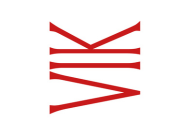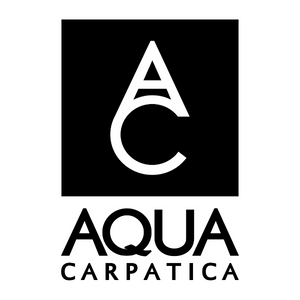It was the Susana Balbo Signature Barrel-Fermented Torrontés 2016. The 2017, 2018 and 2019 are also outstanding white wines.
Susana Balbo, rightly nicknamed the Queen of Torrontés, reigns supreme as far as this grape is concerned. And this wine is the benchmark for all Torrontés Riojano, the most important of the three Torrontés Somethings listed in the Wine Grapes book.
At a lunch in London as part of her mission to prove Torrontés is a noble grape variety, the IWC Lifetime Achievement award-winner presented seven vintages of this wine plus a couple of surprises.
“I want to show the world that Torrontés is a variety that deserves to be considered as a high-quality white wine from Argentina,” she declared.
She went on to explain the key techniques she employs to take Torrontés up a notch, taming its bitter aftertaste and unlocking its elegance. These techniques include planting the right clone at high altitude to retain freshness, curbing yields to tone down the typical tropical fruit and floral notes that hint at its Muscat of Alexandria parentage, and fermenting in special oak barrels to add texture to the mid-palate, as well as complexity and creaminess on the finish.

Moving up the mountain
Susana Balbo has spent decades perfecting this wine. Her love affair with the variety began in 1981 when she started working in Cafayate, Salta, in northern Argentina, where 75% of the winery’s production was Torrontés and she had enough juice for experiments. The successes included using casein as a fining agent to reduce the astringency, soften the tannins, and help to release aromas and flavours with minimal skin contact.“When I was living there for ten years, I identified some vineyards that, for me, were special in the quality of the grapes and the development and also very old vineyards,” she says. One of these vineyards, with looser bunches and smaller berries, belonged to her father-in-law.
She remembered these vines when she embarked on her own Torrontés adventure in Mendoza in 2003, eventually planting her own Torrontés vineyard in Paraje Altamira in the Valle de Uco in 2005. The combination of high altitude (1,150m), a longer ripening period, poor limestone/calcareous soils, good drainage and high-density planting produces wine with higher acidity, fewer tropical fruit notes, more citrus flavours (such as orange peel) and a more elegant bouquet with floral and herbal (rosemary and thyme) notes.
Low yield
Another key to higher quality Torrontés, according to Susana, is low yields. Torrontés is a very vigorous variety and can produce 30-40 tonnes per hectare in eastern Mendoza, but Susana only wants 8t/ha, so they remove shoots and clusters in mid-December. This also helps the grapes to ripen in such a cool climate, where the average temperatures are around 20-22°C.The right kind of oak
But it’s the subtle oak influence that gives this extraordinary wine its extra dimension.Susana started fermenting Torrontés in barrels in 2013, but she didn’t release this wine as she felt the barrel toasting was too prominent. However, she says, “I tasted it (the 2013 vintage) six years later and I was amazed, because the oak was gone and I could see the potential and the quality. So, you could use a higher toast, but you would have to wait five years to sell the wine. No way with 150% inflation!”
Instead, she helped a Chilean cooper to adopt a new technique she came across at an AWRI seminar in Australia – that of toasting the barrels slowly (over four hours) using hot air (190-210°C). She orders barrels that are hot-air-toasted at slightly different temperatures between 190 and 195°C for added complexity. “The contribution of the oak is for the mid-palate and the finish, but you don’t feel the oak in the wine,” she observes. “Torrontés is naturally bitter, but I wanted more balance and better mouthfeel without becoming too bitter.”
She’s right, it’s hard to detect the oak in the wine and I’m even more surprised when Susana informs me it’s 100% new French oak barrels that are used for the fermentations and short ageing on lees. They are 500L in size, but still the lack of obvious oak notes is a surprise.
A gentle touch in the winery
Torrontés is a variety that’s very sensitive to oxidation, according to Susana, “and you need to work with inert gas all across it, and to manage very well the juice in order to avoid oxidation”.- The handpicked grapes are put into refrigerated containers so they are cold (6-8°C) by the time the bunches enter the pneumatic press.
- The whole clusters, protected by dry ice, are pressed quickly with low pressure – stopping when they have released 50% of the potential juice.
- “Very clean” juice goes into the barrels for inoculation with yeasts selected from Susana’s vineyards in 1986.
- The wine usually stays on lees in the new barrels for four months, with weekly bâtonnage (six months if they have gone into second-fill barrels).
- The wines are stabilised using bentonite.
- Susana likes screwcaps but is aware they are not popular in all markets. She is, however, considering Vinolok glass stoppers (currently used on her rosé) for all her white wines as soon as she can source the right shape and size bottles in Argentina.
The other top Torrontés in the range
The Barrel-Fermented Torrontés is one of a diverse range of Torrontés wines produced by Susana Balbo Wines. These go from zero and low-alcohol offerings to the more traditional and fruity Crios (a 50/50 blend of Cafayate and Mendoza fruit) and a white blend featuring 38% Semillón, 34% Sauvignon Blanc, and 28% Torrontés. There is also a naturally sweet wine, a late-harvest version, and a high-end orange wine.This wine, the Susana Balbo Limited Edition Naranjo De Raiz 2020, demonstrates her ability to make faultless skin-contact wines. Susana said if she produced a cloudy, oxidative wine her oenology teachers would ask her to return to the classroom. She favours seven to ten days of skin contact at low temperatures using inert gas to prevent oxidation and makes the wine in amphorae.
She started experimenting with skin-contact amber wines in 2019. The typical protocol now involves:
- Grapes kept in a cold room for 24 hours prior to destemming (no crushing).
- A pied de cuve to kickstart the fermentation in 500L and 1,000L amphorae (at 14-18°C);
- Fourth-use barrels for 12 months of ageing and settling.
It's released a year later than her other Torrontés to integrate the tannins. ABV is 13.5%.
Another interesting development is the top-end single-vineyard wine, Susana Balbo Signature Limited Edition Blanco de Gualtallary, from a vineyard at 1,300m. This is a “very cold” site, according to Susana, with highly calcareous soils. The debut release, from 2021, comes from ex-Chardonnay vines that have been regrafted.
The next experiment involves planting Torrontés at an even more extreme altitude of 1,600m in the Uco Valley’s San Pablo GI. Susana admits: “I don’t know if we will be able to ripen the grapes, but maybe 2,000kg per hectare is going to happen.”
I look forward to trying it on her next visit to London.

 English
English French
French



.png)


.png)





